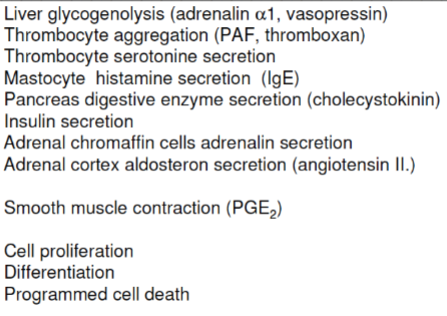Signal Transduction 2
1/43
There's no tags or description
Looks like no tags are added yet.
Name | Mastery | Learn | Test | Matching | Spaced |
|---|
No study sessions yet.
44 Terms
How are signal transduction pathways grouped
By the type of receptor.
What are the 4 major types of membrane-bound receptors
Ion channel-enclosing receptors
7-transmembrane domain (7-TM) receptors
1 hydrophobic domain receptors with enzyme activity
1 hydrophobic domain receptors without enzyme activity
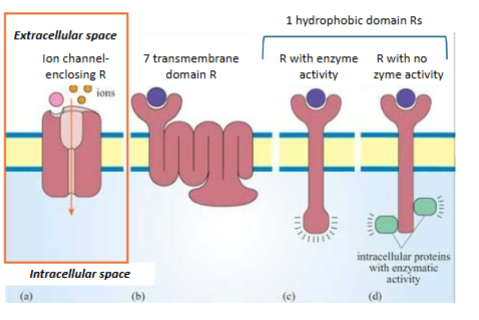
Besides membrane-bound receptors, what other receptor classes exist
Cytosolic receptors
Nuclear receptors
What is an example of an ion channel-enclosing receptor
The nicotinic acetylcholine receptor (nAChR)
True/False Nicotinic acetylcholine receptors are only expressed in excitable cell types
False: Expressed in a variety of excitable and non-excitable cell types
What types of cells express the nicotinic acetylcholine receptor?
Skeletal muscle cells (neuromuscular junction)
Neurons
Adrenal medulla chromaffin cells (Acetylcholine (Ach)-induced epinephrin release)
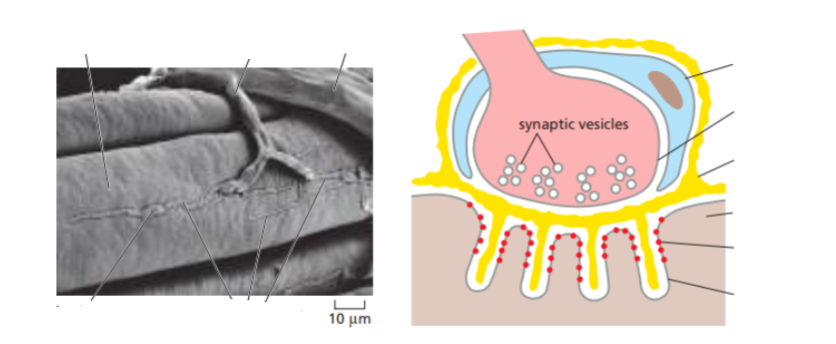
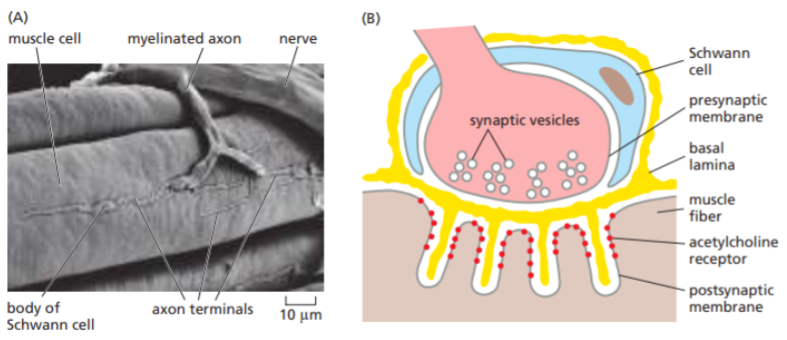
What is the sequence of events in acetylcholine signalling at the neuromuscular junction?
Impulse → Ca²⁺ influx → ACh release → Na⁺ depolarization → Action potential → SR Ca²⁺ release → Contraction
How is the signal switched off at the neuromuscular junction?
Degradation of acetylcholine by acetylcholinesterase in the synaptic cleft (within milliseconds).
Receptor desensitisation by phosphorylation and internalisation.
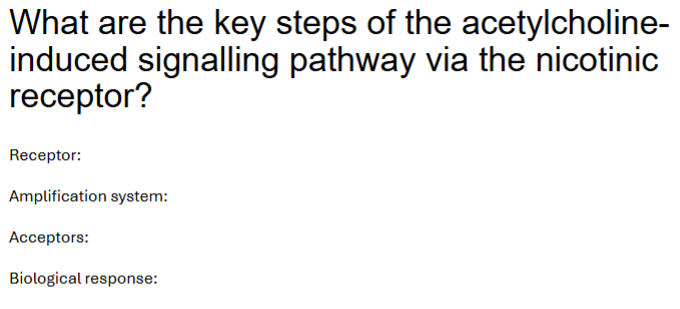
Receptor: Nicotinic acetylcholine receptor.
Amplification system: Ion fluxes (Na⁺ depolarization, Ca²⁺ release).
Acceptors: Muscle contractile machinery.
Biological response: Skeletal muscle contraction.
What does nicotine do at the nicotinic receptor?
Nicotine activates the receptor, mimicking acetylcholine, leading to stimulation.
Why is nicotine addictive?
Because it stimulates nicotinic receptors in neurons, causing dopamine release
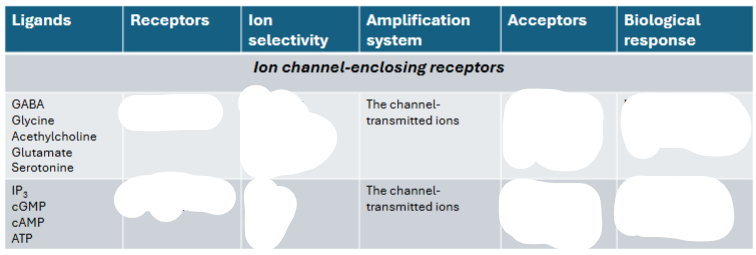
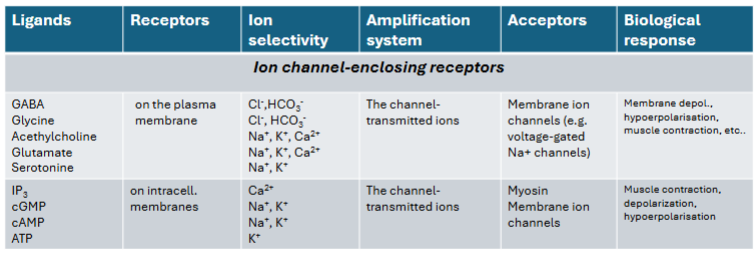
Give an example of a 7-transmembrane domain receptor (specific)
β adrenergic receptor
Describe the structure of a 7-TM receptor
Seven transmembrane domains with the N terminus (amino terminal) outside the cell & the C terminus (carboxyl terminal) in the cytosol inside the cell.
The ligand sits in a pocket formed by transmembrane helices
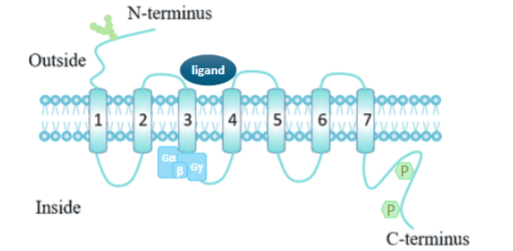
How do 7-TM receptors interact with G proteins?
Upon activation, they bind G proteins via the 3rd transmembrane domain.
(aka G protein-coupled receptor)
Where (specific structure) & by what (cells) does epinephrine get produced
Chromaffin cells in the adrenal medulla
Effects of epinephrine on body systems
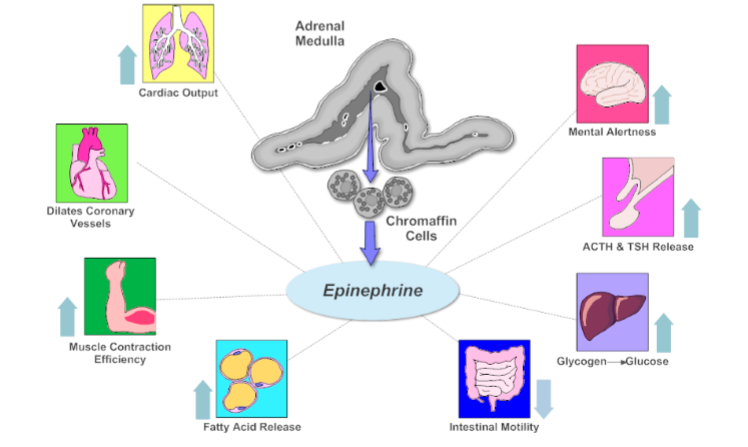
What happens when epinephrine reaches a muscle cell
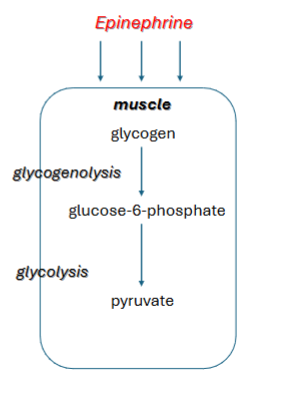
To which protein superfamily do G proteins belong?
The GTPase protein superfamily (with over 50 members)
Explain the amplification system of G protein-activated adenylate cyclase
1 occupied receptor → Many subunits being activated (amplification)
PKA phosphorylates many cellular proteins which cause the cellular response (amplification)
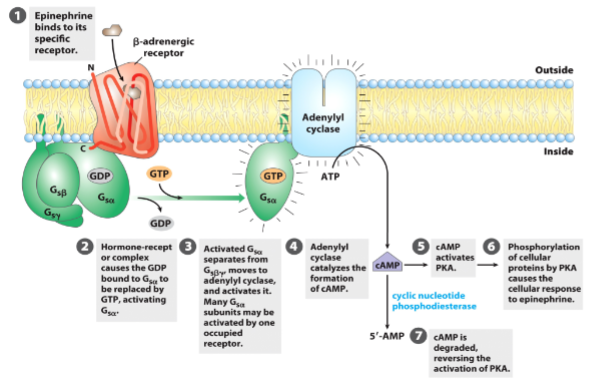
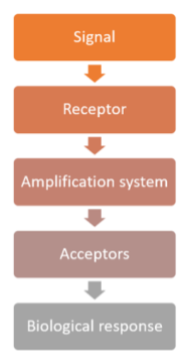
We have gone through the amplification system. Now, what are the acceptors & what regulates them
Protein kinase A (PKA) regulates the acceptors:
Enzymes
Structural proteins - troponin, myosin light chain kinase
Ion channels - IP3-sensitive calcium channel
Transcription factors (cAMP response element (CRE) binding protein (CREB)
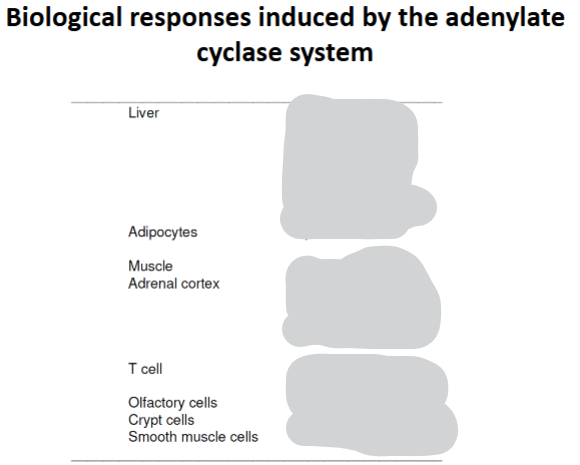
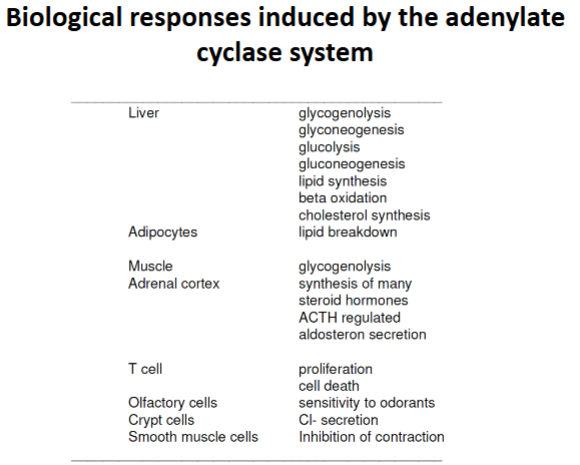
Cystic Fibrosis is an underactive/nonfunctional CFTR (cystic fibrosis transmembrane conductance regulator). What would an overactive CFTR be
Cholera
How does Cholera cause an overactive CFTR
1. Cholera toxin ADP-ribosylates → freezes Ga in active conformation → constitutive adenylate cyclase activity & high cAMP
3. cAMP drives protein kinase A activity
4. PKA phosphorylates & activates CFTR (cystic fibrosis transmembrane conductance regulator) Cl⁻ channels on the apical membrane.
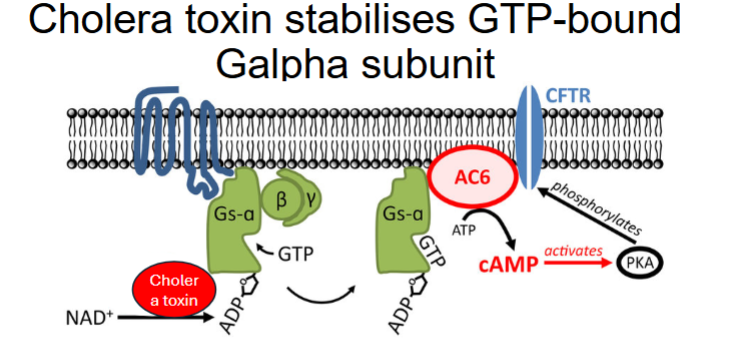
Moving onto the next amplification system…
:)
Phospholipase C can be activated via what
G proteins
or
Tyr phosphorylation
What happens when phospholipase C is activated
It hydrolyses (cleaves) PI(4,5)P₂ (Phosphatidylinositol 4,5-bisphosphate) into membrane bound diacyl-glycerol and cytosolic inositol 1,4,5-trisphosphate (IP3)
Fate of membrane bound diacyl-glycerol and cytosolic inositol 1,4,5-trisphosphate (IP3)
Diacylglycerol activates protein kinase C (PKC)
Inositol 1,4,5-trisphosphate (IP3) releases Ca2+ from the endoplasmic reticulum and fully activates protein kinase C (PKC) with Diacylglycerol.
IP3 can’t activate PKC by itself, but Diacylglycerol can.
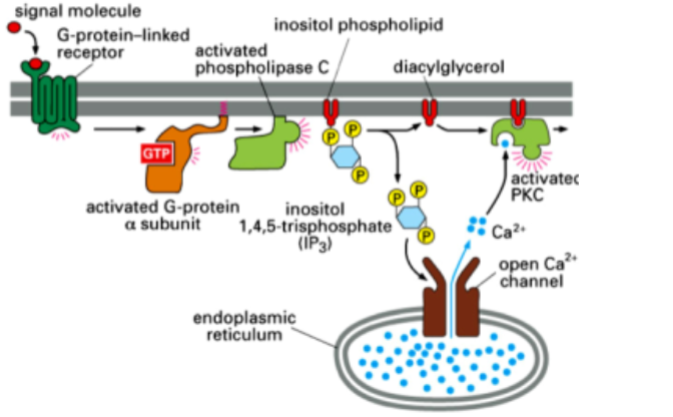
What types of receptor is The Inositol 3-phosphate receptor
Intracellular, ion channel-enclosing receptor
what ion is associated with The Inositol 3-phosphate receptor
Ca2+
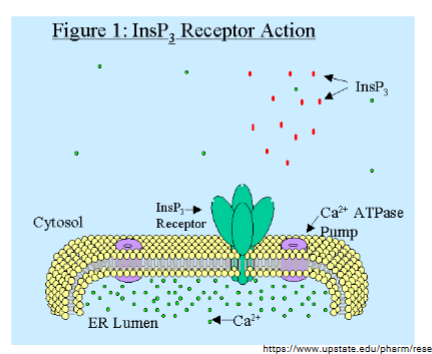
Briefly how does The Inositol 3-phosphate receptor work
The inositol 1,4,5-trisphosphate (IP₃) receptor is a ligand-gated Ca²⁺ channel on the endoplasmic reticulum (ER) membrane.
When IP₃ binds, the receptor opens → Ca²⁺ ions flow out of the ER into the cytosol
Calcium activates protein by 2 mechanisms - what are they
Direct binding
or
Binding to a calcium-activated regulatory subunit
What calcium targets are directly activated by Ca2+

Name some calcium sensing regulatory subunits

What are the targets of protein kinase C
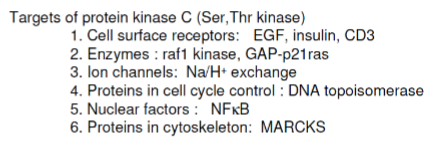
Name some PLC-induced biological responses
